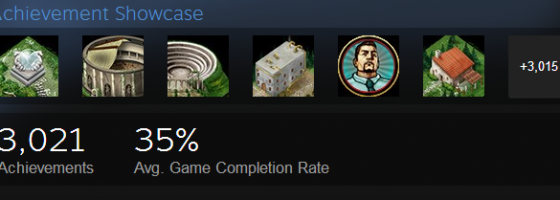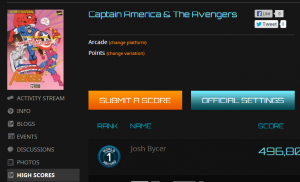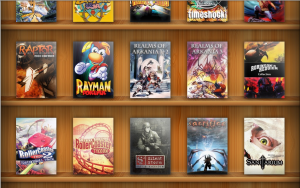When it comes to talking about achievements, there are numerous topics we can examine: from design, quality and even if they are even important. I’ve written about achievement design in the past and for today’s post I want to talk about some thoughts as to why achievements are so popular despite rarity, difficulty and what designers say.
One and Done:
To understand why achievements have become so popular we need to go back to the older days of the industry. In the 80s and 90s, long before the likes of digital distribution, Steam and even an Indie market, video games were a solitary hobby.
When someone played a video game, that experience only lasted for the duration of the time spent. The second someone turned off their console, finished the game or got a game over, that experience and all the time spent playing was gone forever. There was no permanence to anything involving playing a video game and the experience was limited to your arcade or house.
Outside of world record sites like Twin Galaxies, your accomplishments were only limited to yourself and any local players who happened to see your high score.
And that was alright, gamers weren’t looking for worldwide glory for playing a video game, they just wanted to experience the game. Sure, getting listed in Nintendo Power for a high score or winning a local video game tournament was great, but these were few in far between. But as we moved into the last decade, the rise of achievements and digital distribution soon changed things.
The Virtual Trophy Wall:
When Microsoft released the Xbox in 2001, the first big innovation offered was having a unified online network in the form of Xbox Live. Today, it might not sound like a huge deal but back then, it was a game changer.
Console games did have online access in the past such as Phantasy Star Online, but Xbox Live was the first time where the console developer created a network for all designers to make use of built into the system. At this time, the arcade industry was dying a slow death and gamers now had the ability to interact with people on a global scale without the need of a computer.
But it wasn’t until 2005 with the release of the Xbox 360 that the final piece to the puzzle was added: achievements. Achievements as we all know by now, were virtual trophies that became attached to someone’s Xbox Live account for completing a specific task in a game.
Achievements also had a “gamerscore” where achievements had a qualitative score to them to represent their overall difficulty.
There was speculation that the gamerscore was going to be used for something more tangible but nothing ever came of this console generation. Supposedly, Microsoft may change that for the Xbox One, but we don’t have anything concrete at this point.
Achievements were one of those ideas that no one really expressed any interest in wanting before, but became something incredibly important after their adoption to the point that Microsoft made a mandate that any game on XBLA was required to have achievements in place no matter what.
Now we come to the heart of the matter: Why are achievements so popular? As video games became a connected activity thanks to Xbox, Steam and the whole rise of the digital market, gamers were no longer living in their own little bubble away from everyone.
With a push of a button, someone could view every game you’ve ever played on a service and what kind of a gamer are you. Achievements served two purposes, a local one and a global one.
Locally, we could associate achievements as an analogy to the concept of the gold star from kindergarten in how you do something right and you get a meaningless award. And yes, the term “meaningless” can by and large be attached to achievements.
However it’s the global purpose that adds a sense of perceived value to achievements by players using them to boost their own self worth. It’s a similar situation that we see among hunters, athletes and any kind of profession that has awards or trophies. That it’s not just important about owning them, but having a reminder of your excellence and showing it off.
It’s why people are so proud of trophies or hunters collecting pelts or stuffing hunted animals: it’s a reminder of something amazing that they did. The same can be said of video game achievements in that they act both as a reminder of the player doing something good and as a trophy to display to other players.
Once again, achievements offer that sense of permanence to video game playing that was not there for the early days of the industry and despite designers wishing otherwise, gamers are going to continue wanting achievements in games.
In that sense for lack of a better term, achievements have gamified gameplay.
Now for me, I can think of how achievements could go further to provide that sense of permanence and trophy collecting to attract more gamers.
One of the problems with achievements is that they are just icons attached to someone’s profile. But what if we take things further? And create virtual trophies that players could unlock and display for completing achievements?
Take the concept of Good Old Game’s virtual cabinet and combine them with unique virtual trophies for either completing a specific achievement in a game, or for amassing enough achievements in one game. Now I know that some of you right now are thinking that a virtual trophy instead of an icon won’t mean much.
But remember that many people not only enjoy earning an award, but proudly displaying it for others to see. I remember that Sony was thinking of doing something along those lines with the Playstation Home concept but since I don’t use my PSN all that much, I don’t know if anything ever came out of it.
Achievements have been one of the biggest additions to the Game Industry regardless of your opinion on them. And today we even have achievements attached to forum accounts on websites. With the next console generation coming up fast, it will be interesting to see how achievements will change and the ripple effect outward to all corners of the Game industry.




